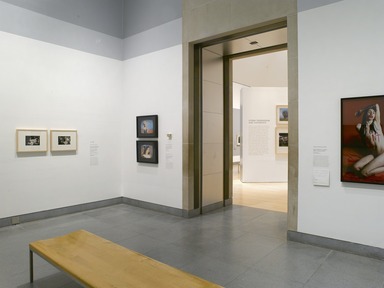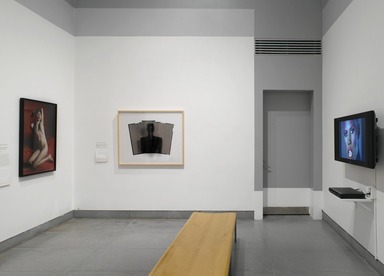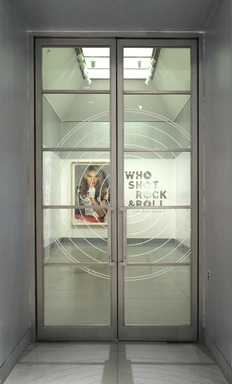

Who Shot Rock & Roll: A Photographic History, 1955 to the Present, October 30, 2009 through January 31, 2010 (Image: DIG_E2009_Who_Shot_Rock_01_PS2.jpg Brooklyn Museum photograph, 2010)

Who Shot Rock & Roll: A Photographic History, 1955 to the Present, October 30, 2009 through January 31, 2010 (Image: DIG_E2009_Who_Shot_Rock_02_PS2.jpg Brooklyn Museum photograph, 2010)
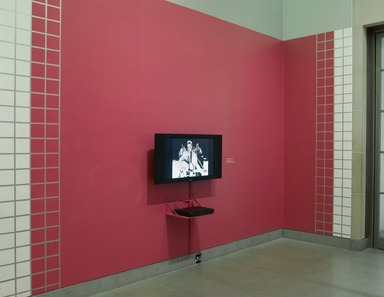
Who Shot Rock & Roll: A Photographic History, 1955 to the Present, October 30, 2009 through January 31, 2010 (Image: DIG_E2009_Who_Shot_Rock_03_PS2.jpg Brooklyn Museum photograph, 2010)

Who Shot Rock & Roll: A Photographic History, 1955 to the Present, October 30, 2009 through January 31, 2010 (Image: DIG_E2009_Who_Shot_Rock_04_PS2.jpg Brooklyn Museum photograph, 2010)
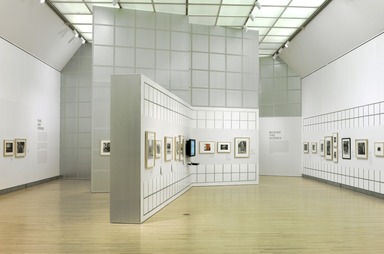
Who Shot Rock & Roll: A Photographic History, 1955 to the Present, October 30, 2009 through January 31, 2010 (Image: DIG_E2009_Who_Shot_Rock_05_PS2.jpg Brooklyn Museum photograph, 2010)

Who Shot Rock & Roll: A Photographic History, 1955 to the Present, October 30, 2009 through January 31, 2010 (Image: DIG_E2009_Who_Shot_Rock_06_PS2.jpg Brooklyn Museum photograph, 2010)
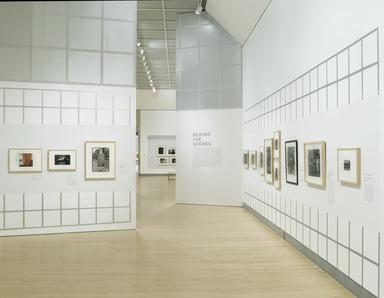
Who Shot Rock & Roll: A Photographic History, 1955 to the Present, October 30, 2009 through January 31, 2010 (Image: DIG_E2009_Who_Shot_Rock_08_PS2.jpg Brooklyn Museum photograph, 2010)
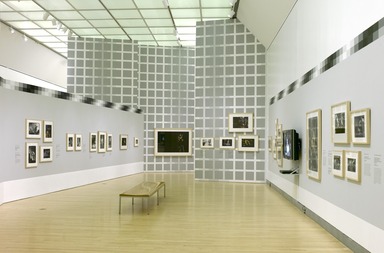
Who Shot Rock & Roll: A Photographic History, 1955 to the Present, October 30, 2009 through January 31, 2010 (Image: DIG_E2009_Who_Shot_Rock_09_PS2.jpg Brooklyn Museum photograph, 2010)
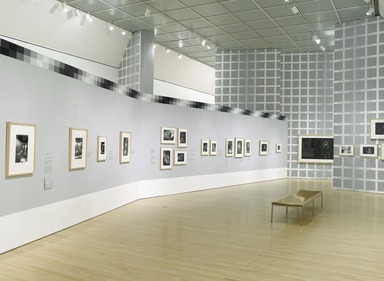
Who Shot Rock & Roll: A Photographic History, 1955 to the Present, October 30, 2009 through January 31, 2010 (Image: DIG_E2009_Who_Shot_Rock_10_PS2.jpg Brooklyn Museum photograph, 2010)
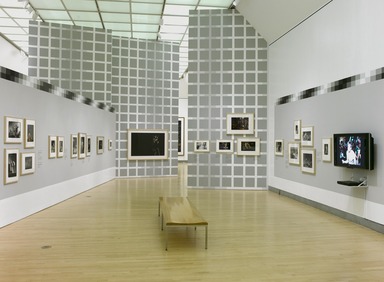
Who Shot Rock & Roll: A Photographic History, 1955 to the Present, October 30, 2009 through January 31, 2010 (Image: DIG_E2009_Who_Shot_Rock_11_PS2.jpg Brooklyn Museum photograph, 2010)

Who Shot Rock & Roll: A Photographic History, 1955 to the Present, October 30, 2009 through January 31, 2010 (Image: DIG_E2009_Who_Shot_Rock_12_PS2.jpg Brooklyn Museum photograph, 2010)
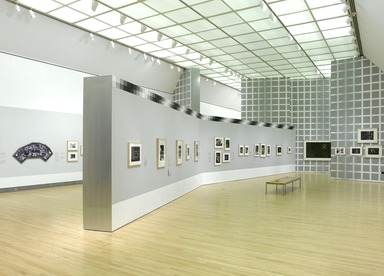
Who Shot Rock & Roll: A Photographic History, 1955 to the Present, October 30, 2009 through January 31, 2010 (Image: DIG_E2009_Who_Shot_Rock_13_PS2.jpg Brooklyn Museum photograph, 2010)
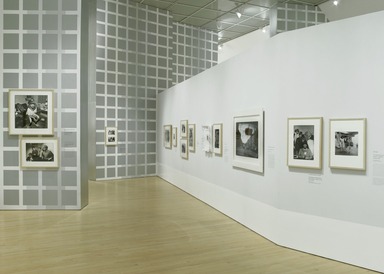
Who Shot Rock & Roll: A Photographic History, 1955 to the Present, October 30, 2009 through January 31, 2010 (Image: DIG_E2009_Who_Shot_Rock_14_PS2.jpg Brooklyn Museum photograph, 2010)

Who Shot Rock & Roll: A Photographic History, 1955 to the Present, October 30, 2009 through January 31, 2010 (Image: DIG_E2009_Who_Shot_Rock_15_PS2.jpg Brooklyn Museum photograph, 2010)
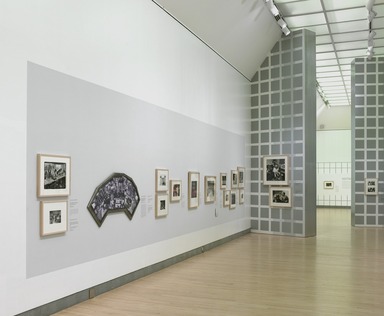
Who Shot Rock & Roll: A Photographic History, 1955 to the Present, October 30, 2009 through January 31, 2010 (Image: DIG_E2009_Who_Shot_Rock_16_PS2.jpg Brooklyn Museum photograph, 2010)
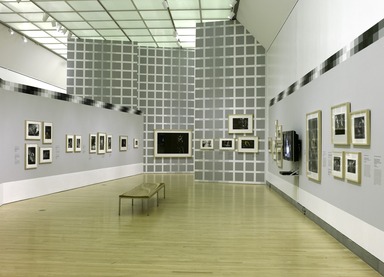
Who Shot Rock & Roll: A Photographic History, 1955 to the Present, October 30, 2009 through January 31, 2010 (Image: DIG_E2009_Who_Shot_Rock_17_PS2.jpg Brooklyn Museum photograph, 2010)

Who Shot Rock & Roll: A Photographic History, 1955 to the Present, October 30, 2009 through January 31, 2010 (Image: DIG_E2009_Who_Shot_Rock_18_PS2.jpg Brooklyn Museum photograph, 2010)

Who Shot Rock & Roll: A Photographic History, 1955 to the Present, October 30, 2009 through January 31, 2010 (Image: DIG_E2009_Who_Shot_Rock_19_PS2.jpg Brooklyn Museum photograph, 2010)
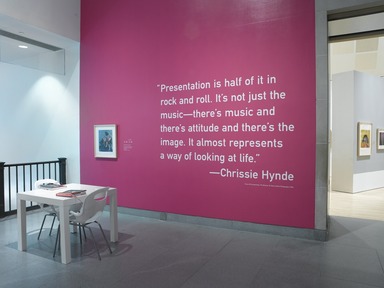
Who Shot Rock & Roll: A Photographic History, 1955 to the Present, October 30, 2009 through January 31, 2010 (Image: DIG_E2009_Who_Shot_Rock_20_PS2.jpg Brooklyn Museum photograph, 2010)

Who Shot Rock & Roll: A Photographic History, 1955 to the Present, October 30, 2009 through January 31, 2010 (Image: DIG_E2009_Who_Shot_Rock_21_PS2.jpg Brooklyn Museum photograph, 2010)

Who Shot Rock & Roll: A Photographic History, 1955 to the Present, October 30, 2009 through January 31, 2010 (Image: DIG_E2009_Who_Shot_Rock_22_PS2.jpg Brooklyn Museum photograph, 2010)

Who Shot Rock & Roll: A Photographic History, 1955 to the Present, October 30, 2009 through January 31, 2010 (Image: DIG_E2009_Who_Shot_Rock_23_PS2.jpg Brooklyn Museum photograph, 2010)
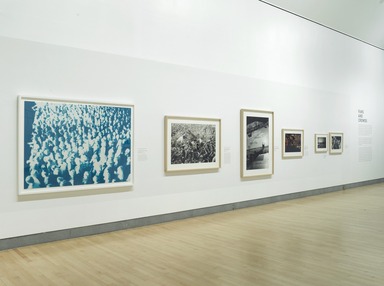
Who Shot Rock & Roll: A Photographic History, 1955 to the Present, October 30, 2009 through January 31, 2010 (Image: DIG_E2009_Who_Shot_Rock_24_PS2.jpg Brooklyn Museum photograph, 2010)
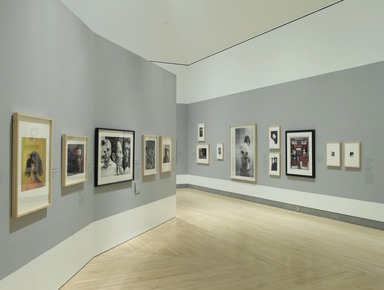
Who Shot Rock & Roll: A Photographic History, 1955 to the Present, October 30, 2009 through January 31, 2010 (Image: DIG_E2009_Who_Shot_Rock_25_PS2.jpg Brooklyn Museum photograph, 2010)

Who Shot Rock & Roll: A Photographic History, 1955 to the Present, October 30, 2009 through January 31, 2010 (Image: DIG_E2009_Who_Shot_Rock_26_PS2.jpg Brooklyn Museum photograph, 2010)
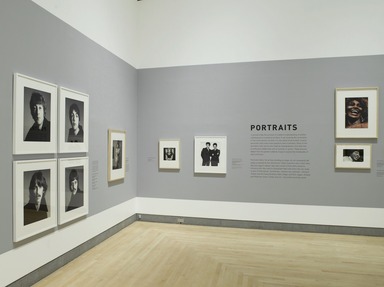
Who Shot Rock & Roll: A Photographic History, 1955 to the Present, October 30, 2009 through January 31, 2010 (Image: DIG_E2009_Who_Shot_Rock_27_PS2.jpg Brooklyn Museum photograph, 2010)

Who Shot Rock & Roll: A Photographic History, 1955 to the Present, October 30, 2009 through January 31, 2010 (Image: DIG_E2009_Who_Shot_Rock_28_PS2.jpg Brooklyn Museum photograph, 2010)

Who Shot Rock & Roll: A Photographic History, 1955 to the Present, October 30, 2009 through January 31, 2010 (Image: DIG_E2009_Who_Shot_Rock_29_PS2.jpg Brooklyn Museum photograph, 2010)
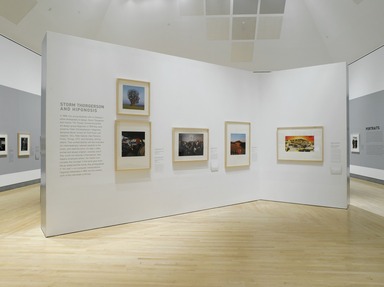
Who Shot Rock & Roll: A Photographic History, 1955 to the Present, October 30, 2009 through January 31, 2010 (Image: DIG_E2009_Who_Shot_Rock_30_PS2.jpg Brooklyn Museum photograph, 2010)
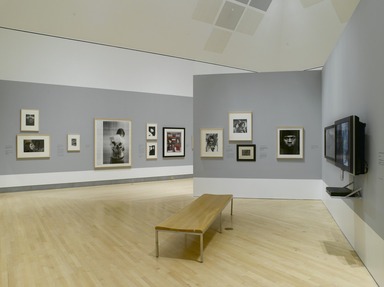
Who Shot Rock & Roll: A Photographic History, 1955 to the Present, October 30, 2009 through January 31, 2010 (Image: DIG_E2009_Who_Shot_Rock_31_PS2.jpg Brooklyn Museum photograph, 2010)
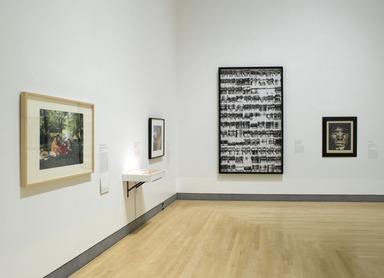
Who Shot Rock & Roll: A Photographic History, 1955 to the Present, October 30, 2009 through January 31, 2010 (Image: DIG_E2009_Who_Shot_Rock_32_PS2.jpg Brooklyn Museum photograph, 2010)

Who Shot Rock & Roll: A Photographic History, 1955 to the Present, October 30, 2009 through January 31, 2010 (Image: DIG_E2009_Who_Shot_Rock_33_PS2.jpg Brooklyn Museum photograph, 2010)
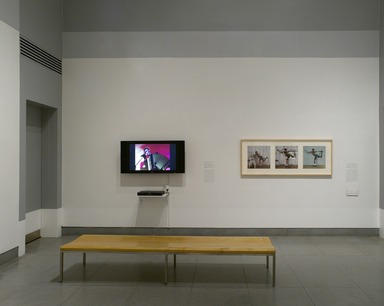
Who Shot Rock & Roll: A Photographic History, 1955 to the Present, October 30, 2009 through January 31, 2010 (Image: DIG_E2009_Who_Shot_Rock_34_PS2.jpg Brooklyn Museum photograph, 2010)
Who Shot Rock & Roll: A Photographic History, 1955 to the Present
-
Who Shot Rock & Roll: A Photographic History, 1955 to the Present
Rock and roll has a handmaiden, and her name is photography. Since the day in 1955 when William “Red” Robertson took the photograph of Elvis Presley that appeared on Elvis’s first album (Elvis’s eyes closed, his sensuous mouth wide open, his guitar pressed to his chest, his legs apart, and his body convulsing), the rock-and-roll revolution has been both musical and visual. The music alone could not convey the full extent of the rebellion, liberation, ecstasy, fun, and group dynamic that is rock. The music needed images to communicate its message of freedom and personal reinvention. The still image remains after the music stops, a conduit for the electricity that is rock and roll.
This exhibition is not a history of rock and roll but an appreciation of the men and women who have photographed the music and given it its visual identity. Although some of these photographs are among the most recognizable images in the world, many of them were taken by photographers whose names are all but unknown. It is time these photographers’ contribution was acknowledged, for like the musicians they have photographed, they, too, have changed the world and how we see and experience it.
Rock-and-roll photography is varied and elastic. It must be, because sometimes rock-and-roll music is just someone playing a sequence of G, C, and D chords, and sometimes it is a multimillion dollar spectacular. The photographs in this exhibition mirror the depth, breadth, artistry, and passion of the music and the musicians and the exuberance of the fans.
Just as there is no one soundtrack that is rock, there is no one photographic vision. The unity in the music comes, as Mick Jagger noted in a 2008 Rolling Stone interview, in trying to keep rock and roll “real, sincere, and heartfelt.” The same is true for the photography of rock.
Guest Curator, Gail Buckland Exhibition Editor and Designer, Matthew Yokobosky, Chief Designer, Brooklyn Museum -
Starting Out
All the musicians depicted in this section are in a state of creative evolution, near the beginning of their careers. They have talent and dreams but no way of knowing if their star will shine or fade. The tentativeness and tenderness in these pictures make them rare in rock-and-roll iconography. None of the subjects is a real celebrity yet. No one has fully learned the pose; each is unsure of what his or her image should be. There is little artifice in any of the photographs. The Rolling Stones don’t yet have a recording contract when Philip Townsend photographs them at the pub; Madonna has just released her first single when Amy Arbus catches her walking down the street; and the Velvet Underground are only a year removed from their first paying gig, a concert at Summit High School in New Jersey for which they received $75, when Nat Finkelstein snaps their picture in 1966. -
Performance
These photographs of live performance convey the charisma, magic, passion, and eroticism of the musicians on stage. The photographers capture quintessential rock-and-roll moments that suggest both the music’s popularity and its transcendent meaning. From Chuck Berry’s duck walk to Mick Jagger’s strut and toss of the head, the moves are often as memorable as the music itself. These images show the Dionysian intoxication and the fervor that are rock and roll—a music that has the potential to liberate the soul, stimulate the hormones, and inspire social and cultural revolutions. -
Portraits
A portrait holds the promise of a distinct understanding of another individual and a connection to them. It can never be the summation of the entire person; at best, it is the result of an honest, incisive encounter that poses more questions than it answers. Many of the portraits in this section are made by photographers who have had a continuous relationship with a musician or group. These pictures depart from the generic celebrity image to explore the individuality of each performer.
Rock and rollers, for all their strutting on stage, do not necessarily like being scrutinized by the camera lens. Many musicians who in their early days are eager to please later take control of their photo sessions, choosing who they want to photograph them and when they are ready to give of themselves. Sometimes, masters are matched—Richard Avedon and the Everly Brothers; Mark Seliger and Mick Jagger; Maripol and Madonna; Anton Corbijn and U2—and brilliant portraits result. -
Behind the Scenes
The photographs in this section are the result of relationships born of trust. They are the antithesis of paparazzi images. These pictures are taken with permission, not stolen. They are about the creative process, not celebrity, and about the stresses and emotional releases in the rock and rollers’ lives. Here, private moments are often captured with fidelity, tenderness, and understanding. These pictures show us musicians in unexpected ways: crying after an intense performance, concentrating on a recording session, eating at a favorite restaurant, or just riding the bus to the next gig. They transcend mainstream images by showing honest emotion and by keeping the artists grounded in the real world. -
Fans and Crowds
Rock stars are only rock stars because they have followers who adore them. Music is one of the predominant ways in which people define themselves and classify themselves into subcultures. Millions study the photographs of their musical gods and model their “look” on them. Bob Gruen, who has photographed rock bands for forty years, says the bands are “so big because they express common ideas . . . rock and roll is a hairstyle and an attitude.”
To get close to one’s hero is intoxicating; you can see it in the faces of the fans. Some of the images most reflective of the importance of rock and roll in people’s lives are pictures of screaming and jostling fans or audiences listening intently, moving together as a single organism.
Charles Peterson, a music photographer from Seattle, describes shooting a rock concert as going to the “front lines,” from which he tries to return with the most honest visual report possible of the extraordinary things he sees. In another context, William M. Ivins, a historian of printmaking, once noted, “At any given moment the accepted report of an event is of greater importance than the event, for what we think about and act upon is the symbolic report and not the concrete event itself.” In other words, revolutions—whether military or musical—need to be photographed to be believed. -
Constructing an Image
Historians of photography tend to divide pictures into those “taken” and those “arranged” or “conceived”—those framed by the viewfinder or ground glass of the camera and those “framed” within the mind. Rock icons need extraordinary images to complement their extraordinary music. To achieve this, they often collaborate with photographers whose skill and imagination turn photo sessions into carefully staged and controlled flights of fancy and wonderment. David LaChapelle parodies rock stars’ excessive lifestyle and dynamic personalities through fantasy and bravado. Chris Stein uses his camera to tell comic-book tales with his fellow musicians as characters. And Albert Watson plays with the similarities between Mick Jagger’s face and a leopard’s to produce one of the most original and striking images in the history of rock-and-roll photography.
-
May 1, 2009
Who Shot Rock & Roll: A Photographic History, 1955 to the Present, the first major museum exhibition to acknowledge photographers for their creative and collaborative role in the history of rock and roll, will be on view at the Brooklyn Museum from October 30, 2009, through January 31, 2010. The exhibition is curated by photographic historian and author Gail Buckland and features many rare and never-before-exhibited photographs.
From its earliest days, rock and roll was captured in photographs that personalized and frequently eroticized the musicians. Photographers were handmaidens to the rock-and-roll revolution, and their work communicates the social and cultural transformations that rock helped bring about from the 1950s to the present. This exhibition is a history not of rock and roll, but of the men and women who have photographed it and given the music its visual identity.
Featuring approximately 175 works by 105 photographers, Who Shot Rock & Roll is organized in six sections: images taken behind the scenes; snapshots of young musicians at the beginning of their careers; photographs of live performances that display the energy of the bands on stage; images of the crowds and fans; portraits that go beyond the surface and celebrity of the musicians; and conceptual images and album covers highlighting the creative and collaborative efforts between the image makers and the subjects.
Among the works on view are such iconic images as William “Red” Robertson’s erotic 1955 photo of a pelvis-thrusting Elvis Presley that appeared on his first album; The Clash’s London Calling album cover by Pennie Smith depicting Paul Simonon smashing his Fender bass guitar; the contact sheet of Bob Gruen’s portrait of John Lennon in a sleeveless New York City T-shirt; Don Hunstein’s photograph of Bob Dylan walking with his girlfriend Suze Rotolo down a snowy Greenwich Village street; David LaChapelle’s image of Lil Kim as a bikini-clad cop; and Anton Corbijn’s shoot of U2 for their Joshua Tree album. The exhibition will also feature photographs by Diane Arbus, Annie Leibovitz, Woodstock photographer Barry Feinstein, Jim Marshall, Ryan McGinley, Linda McCartney, Mark Seliger, and Albert Watson.
Most of the photographs in the exhibition were uncovered in the photographers’ own files. Rarely if ever exhibited pictures include a 1963 photograph by Philip Townsend of the Rolling Stones; an image of James Brown surrounded by female fans shot by actor Dennis Hopper; the working photographs and album cover by Jean-Paul Goude of Grace Jones for Island Life; the contact sheet from Bob Gruen’s famous 1974 rooftop shoot of John Lennon; the full sequence of never-before-exhibited photographs by Ed Caraeff of Jimi Hendrix at the Monterey Pop Festival in 1967; the 1976 photograph by Roberta Bayley used on the Ramones first album; Amy Winehouse on her wedding day by Max Vadukul; the four classic 1967 Beatles portraits by Richard Avedon; Ike and Tina Turner at Club Paradise in Memphis in 1962 by the African-American photographer Ernest Withers; and an approximately nine-by-seven-foot tour-de-force by German photographer Andrea Gursky of Madonna performing in 2001.
The exhibition will also include music videos by artists featured in the exhibition, an eighty-image slide show by Henry Diltz, and a rock-and-roll chronology made from actual album covers.
Gail Buckland is an author, lecturer, curator, and authority on photography. She is the former Olympus Visiting Professor of the History of Photography at the Cooper Union, New York City, where she has taught since 1979. At Sarah Lawrence College she held the Nobel Chair in Art and Cultural History. Ms. Buckland is the former Curator of the Royal Photographic Society of Great Britain and has curated numerous exhibitions, including Fox Talbot and the Invention of Photography at the Pierpont Morgan Library, Visions of Liberty at the New-York Historical Society, and From Today Painting is Dead: The Beginnings of Photography at the Victoria and Albert Museum, London.
The exhibition will be accompanied by a fully illustrated book titled Who Shot Rock & Roll: A Photographic History, 1955 to the Present, to be published by Alfred A. Knopf, with support from the Universal Music Group.
Exhibition editor and designer, Matthew Yokobosky, Chief Designer, Brooklyn Museum.
The exhibition is sponsored by TD Bank.
Generous support is provided by the Barbara and Richard Debs Exhibition Fund, the Arline and Norman M. Feinberg Exhibition Fund, and the Martha A. and Robert S. Rubin Exhibition Fund. Additional support provided by Matthew Marks Gallery.
The New York Observer is print media sponsor.
New York’s Q104.3 is radio media sponsor.
MySpace Music is online media sponsor.
Press Area of Website
View Original
